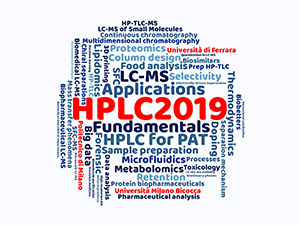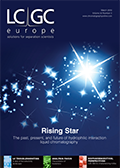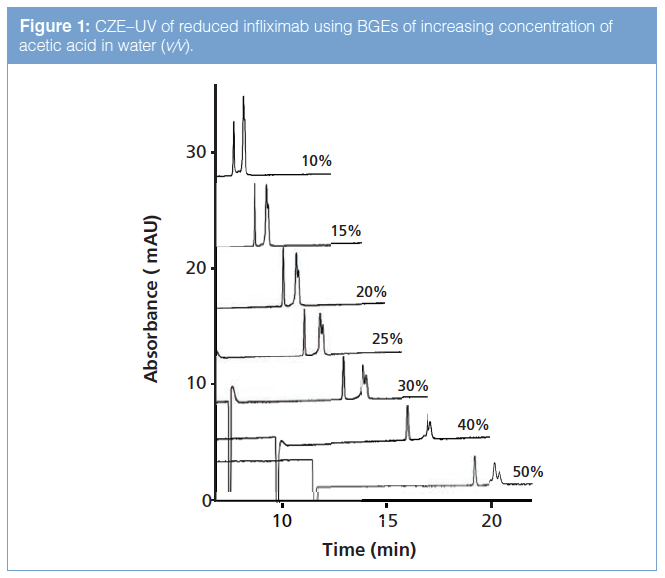The 48th International Symposium on High Performance Liquid Phase Separations and Related Techniques (HPLC 2019)
The 48th International Symposium on High Performance Liquid Phase Separations and Related Techniques (HPLC 2019) will be held 16–20 June 2019 at the Milano-Bicocca University, Milan, Italy. This is the first time that this symposium will be held in Italy.

The 48th International Symposium on High Performance Liquid Phase Separations and Related Techniques (HPLC 2019) will be held 16–20 June 2019 at the Milano-Bicocca University, Milan, Italy. This is the first time that this symposium will be held in Italy.
The HPLC symposium series is the largest, most recognized international forum on high performance liquid chromatography (HPLC) and related techniques. It is the ideal location for industrial and academic researchers to exchange information with other colleagues from all over the world. Both fundamental and practical aspects of separation science will be covered during the conference, with the main focus being on new, highly relevant trends emerging in this field, cutting-edge applications, and innovation in the technology.
Among the many topics that will be covered at HPLC 2019, particular emphasis will be given to hyphenated techniques, in particular liquid chromatography coupled to mass spectrometry (LC–MS), design and characterization of stationary phases, micro- and nano-fluidics, supercritical fluid chromatography (SFC) and capillary electrophoresis (CE) and their applications in proteomics, metabolomics, food analysis, and characterization of biopharmaceuticals and biosimilars. HPLC 2019 will also feature some unique highlights, such as a session entirely dedicated to HPLC for process analytical technology (PAT) and quality assessment in preparative chromatography, and a session focusing on highâperformance thin-layer chromatography (HPTLC). A complete list of topics can be found on the HPLC website.
Thanks to its multidisciplinary character, the symposium represents an important source for analytical chemists, biochemists, and engineers seeking practical solutions to their problems. Researchers will be presenting their work as lectures in topical scientific sessions or in exciting poster sessions. We strongly encourage the active participation of younger scientists in the symposium. A great amount of effort has been made to guarantee low student fees, including some special packages designed to give students the opportunity to attend short courses taught by highly reputed experts. We are offering 14 short courses on different topics, whose description can be found online.

A series of awards will be presented during the conference, including the Csaba Horváth Young Scientist Award, the Best Poster Award, the Uwe Neue Award, and many more. In addition to the traditional awards, HPLC 2019 will feature new exciting ideas to recognize the scientific activity of young colleagues, which will be announced soon on the website and on social media.
A rich scientific and social programme awaits participants, starting with the opening ceremony in the exclusive location of the “Giuseppe Verdi” Conservatorio di Milano, the largest music academy in Italy and one of the most important worldwide. A unique opening event merging music and science will celebrate the genius of Leonardo da Vinci on the 500th anniversary of his death.
Milan is a cosmopolitan and vibrant centre of Italian culture. The various cultures of northern Europe and Mediterranean countries merge and as such Milan has a lot to offer, including art museums, history, opera (La Scala), music, fashion, design, and Italian culinary delights.
Milan also offers a wide range of accommodation for all budgets, and with its three international airports it is easily accessible by plane, and also by car or train for those closer by.
The organizers look forward to welcoming participants in Milan in 2019!
E-mail:hplc2019@effetti.it Website: www.hplc2019-milan.org




















Altering Capillary Gas Chromatography Systems Using Silicon Pneumatic Microvalves
May 5th 2025Many multi-column gas chromatography systems use two-position multi-port switching valves, which can suffer from delays in valve switching. Shimadzu researchers aimed to create a new sampling and switching module for these systems.
Studying Cyclodextrins with UHPLC-MS/MS
May 5th 2025Saba Aslani from the University of Texas at Arlington spoke to LCGC International about a collaborative project with Northwestern University, the University of Hong Kong, and BioTools, Inc., investigating mirror-image cyclodextrins using ultra-high performance liquid chromatography–tandem mass spectrometry (UHPLC–MS/MS) and vibrational circular dichroism (VCD).
Altering Capillary Gas Chromatography Systems Using Silicon Pneumatic Microvalves
May 5th 2025Many multi-column gas chromatography systems use two-position multi-port switching valves, which can suffer from delays in valve switching. Shimadzu researchers aimed to create a new sampling and switching module for these systems.
Studying Cyclodextrins with UHPLC-MS/MS
May 5th 2025Saba Aslani from the University of Texas at Arlington spoke to LCGC International about a collaborative project with Northwestern University, the University of Hong Kong, and BioTools, Inc., investigating mirror-image cyclodextrins using ultra-high performance liquid chromatography–tandem mass spectrometry (UHPLC–MS/MS) and vibrational circular dichroism (VCD).
2 Commerce Drive
Cranbury, NJ 08512

.png&w=3840&q=75)

.png&w=3840&q=75)



.png&w=3840&q=75)



.png&w=3840&q=75)